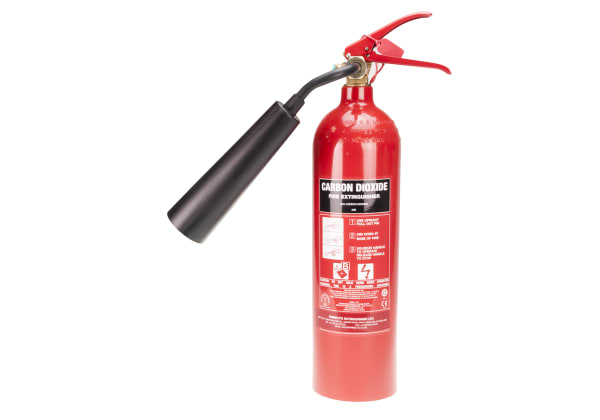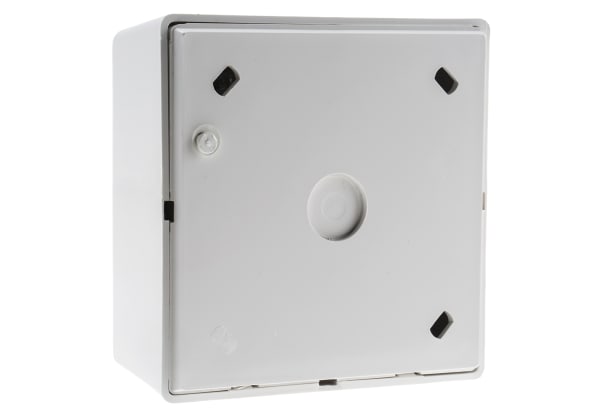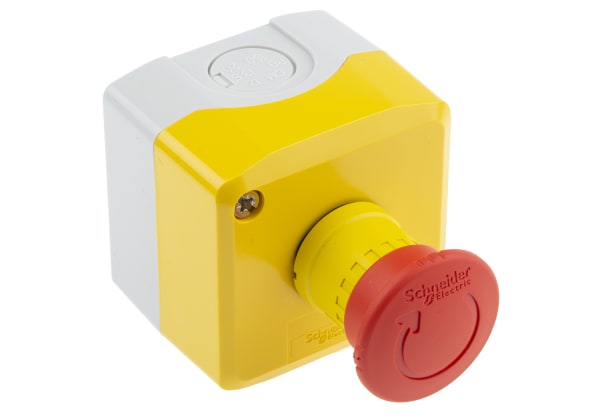- Published 24 Jun 2024
- Last Modified 24 Jun 2024
- 6 min
Smoke Alarm Regulations and Systems
Building regulations dictate that businesses have appropriate fire detection systems in place. This guide examines smoke alarm regulations and the major types of industrial smoke alarms on the market and looks at fire safety for the smart factory.

Reviewed by Jay Proctor, Technical Support Team Leader (May 2024)
Smoke alarm regulations ensure that residential and commercial properties have an effective fire detection system in place in the event of a fire. Smoke alarm regulations have been in the news in recent times because of changes to legislation that affect landlords in social housing – but commercial businesses also must comply with the regulations when it comes to fire detection. This guide explores how smoke detector regulations affect industrial businesses, looks at some of the types of industrial smoke detectors on the market, and assesses how smart factories are addressing fire safety.
Smoke Alarms and Safety
Why fit smoke alarms? Smoke alarms and smoke detector testers save lives. That’s the case not just on the domestic front (according to the Government, you are 10 times more likely to die in a house fire if there were no smoke alarms installed) but also in industry. Factor in that manufacturers and other industrial businesses often have extensive premises or a lot of expensive capital equipment to lose, and that a fire could potentially be catastrophic to production, and it’s easy to see why smoke alarms are so essential.
Smoke Alarm Regulations
In the UK, national building regulations say all businesses must have an appropriate fire detection system. This means that in the event of a fire, it should be easy to detect the blaze and warn employees and any other occupants to evacuate. The London Fire Brigade recommends that businesses install a smoke alarm or heat alarm in each room where a fire could potentially start. Fire detection systems should meet the BS 5839 standard which is a code of practice for the design, installation, commissioning, and maintenance of non-domestic fire detection and alarm systems.
BS 5839 recommends the location of components of the fire alarm system. Systems are categorised according to whether they are designed to protect people or property. The standard also specifies which types of detectors should be used. These include not only smoke detectors but also carbon monoxide detectors, heat detectors, and infrared and ultraviolet detectors. Some fire detectors on the market may be multi-sensor, i.e., capable of detecting multiple signs of fire. Smoke alarms or other detection devices should be chosen based on the speed of detection needed, the type of fire hazard, and the need to minimise false alarms.
Types of Smoke Alarm
There are various types of smoke detectors on the market. They include the following:
- Ionisation smoke detectors. These smoke detectors are excellent at detecting fast-burning fires. They feature two electrically charged plates and radioactive material that ionises the air between them. When smoke enters the detector, it disrupts the flow of ions between these two surfaces, the current drops, and the alarm is activated. Despite their effectiveness, there is an issue with these types of smoke detectors and how they work: They are gradually being phased out due to concerns about their use of radioactive material
- Photoelectric smoke detectors. These detectors employ a beam of light to detect the presence of smoke and are particularly useful for detecting slow-burning or smouldering fires (such as in wiring looms). Photoelectric detectors may also be less prone to false alarms than ionisation devices
- Multi-sensor smoke detectors. These devices combine ionisation and photoelectric technology to detect both fast-growing blazes and smouldering fires as quickly as possible. Multi-sensor devices may also feature technology that detects not only smoke but also heat or the release of carbon monoxide
Industrial Smoke Alarms
Industrial smoke alarms should be part of a fire detection system that ensures personnel and equipment are protected and that’s appropriate to the scale of the building. In industrial settings, it’s necessary to consider the potential for false alarms caused by the environment, for example, parts of a facility that are dusty or feature a lot of smoke from vehicles.
Choosing a Smoke Detector
The right fire detection system and types of smoke detectors must be chosen so that the system responds appropriately if an emergency occurs. British law stipulates that businesses must employ an appropriate fire detection system.
How many smoke alarms do I need? Smaller building requirements differ from large facilities. A workshop, for example, may only need simple smoke detectors, but large premises with multiple floors should have a network of smoke detectors or multi-sensor detectors – smoke and heat or carbon monoxide – linked together with a single interface.
Where Should I Place Smoke Detectors?
Smoke detectors should be installed on each floor and in each area of a building. This includes areas such as corridors and staircases. The quantity and layout of smoke detectors should be determined by a fire risk assessment. The requirements for locating smoke detectors will vary depending on the nature of the business, the fire risk, and the building size and layout. Consult a fire safety expert when planning your fire detection system.
Benefits of Industrial Smoke Alarms
There are many benefits of industrial smoke alarms. They protect property and capital equipment. They enable a business to comply with the law. They may help lower insurance premiums. Most importantly, they prevent loss of life.
Who is Responsible for the Smoke Alarm System?
According to the Government, fire safety at a business is the responsibility of the employer, business owner, landlord, or occupier, or ‘anyone else with control of the premises.’
Smart Factories and Fire Safety
Smart factories are employing the latest technological developments to reduce the risk of fire. For example, AI and smart smoke detectors and other sensors are enabling real-time analysis and monitoring of manufacturing environments to detect not only fire but also flooding or leakages of gas or steam. Artificial intelligence has also been used to analyse datasets on fires to optimise the evacuation of buildings in the event of an emergency. Developments in communications technology and the best smart smoke detectors in the UK are also enabling the coordination of fire safety across multiple manufacturing facility sites so that fire safety can be optimised.
Like many other areas of manufacturing, health and safety is being revolutionised by Industry 4.0.
Did you know RS carries a great range of fire safety products? Explore our alarm sounders and strobes here.


